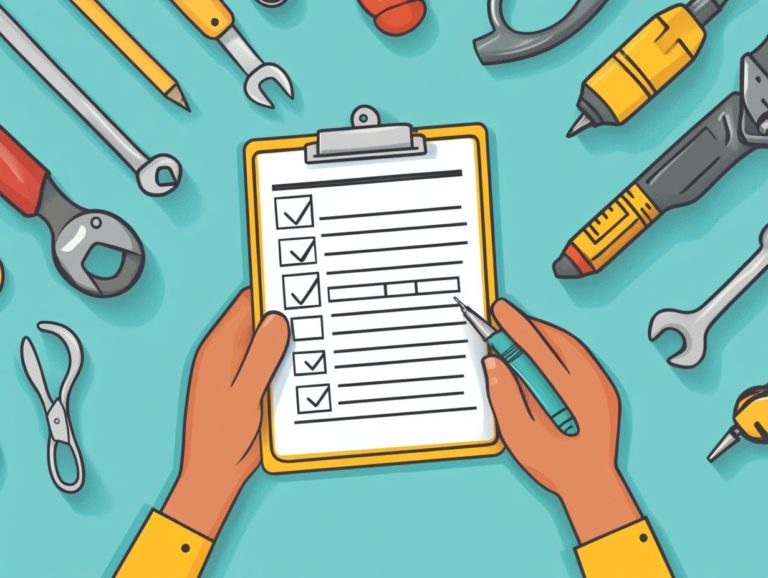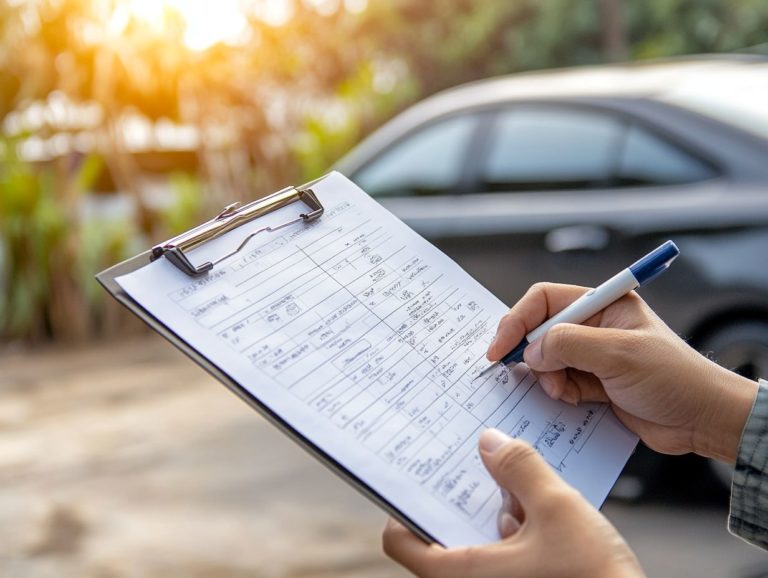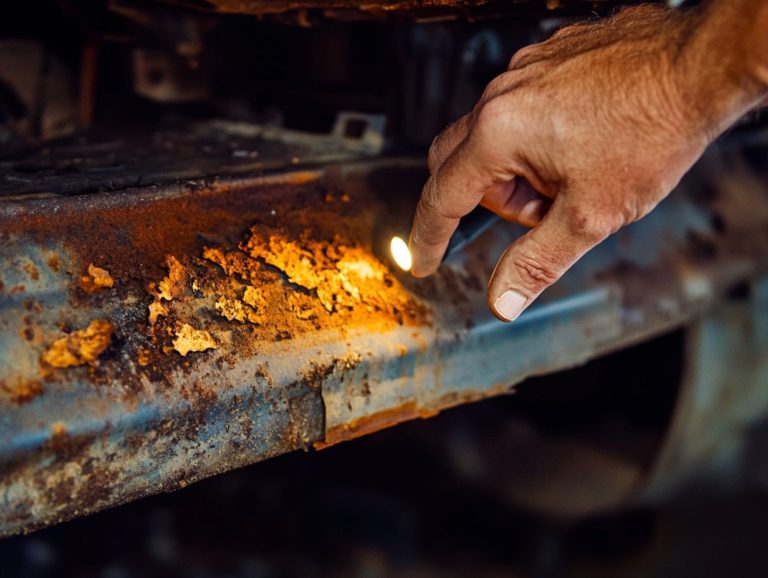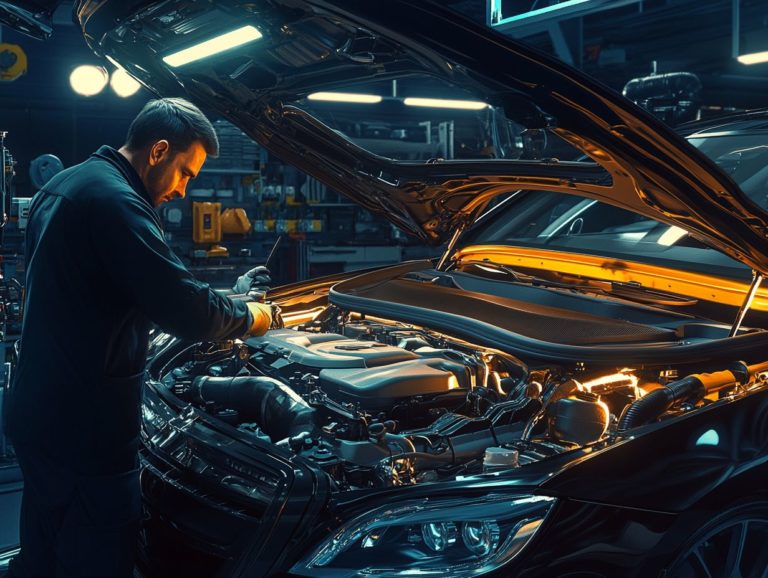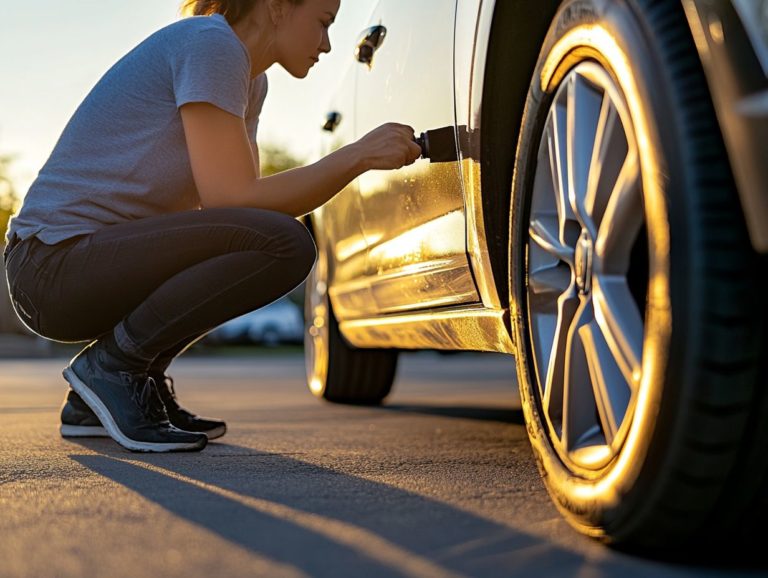Essential Factors in a Comprehensive Car Inspection
Car inspections are vital for vehicle safety and longevity.
Scheduling regular inspections helps you find problems early, saving time and money. This article explores what a thorough car inspection includes, from exterior checks to under-the-hood assessments.
You’ll discover how to identify warning signs, choose a reliable mechanic, and keep your vehicle in great shape. With this knowledge, you can ensure your car stays in top condition for years.
Contents
- Key Takeaways:
- The Importance of Car Inspections
- Key Components of a Comprehensive Car Inspection
- Signs of Potential Issues
- Choosing a Reliable Mechanic for Inspections
- Frequency of Car Inspections
- Costs of Car Inspections
- Tips for Maintaining a Well-Inspected Car
- Frequently Asked Questions
- What are the essential factors that should be included in a comprehensive car inspection?
- Why is it important to have a comprehensive car inspection?
- How often should I get a comprehensive car inspection?
- What are the benefits of a comprehensive car inspection?
- What happens during a comprehensive car inspection?
- Can I perform a comprehensive car inspection on my own?
Key Takeaways:
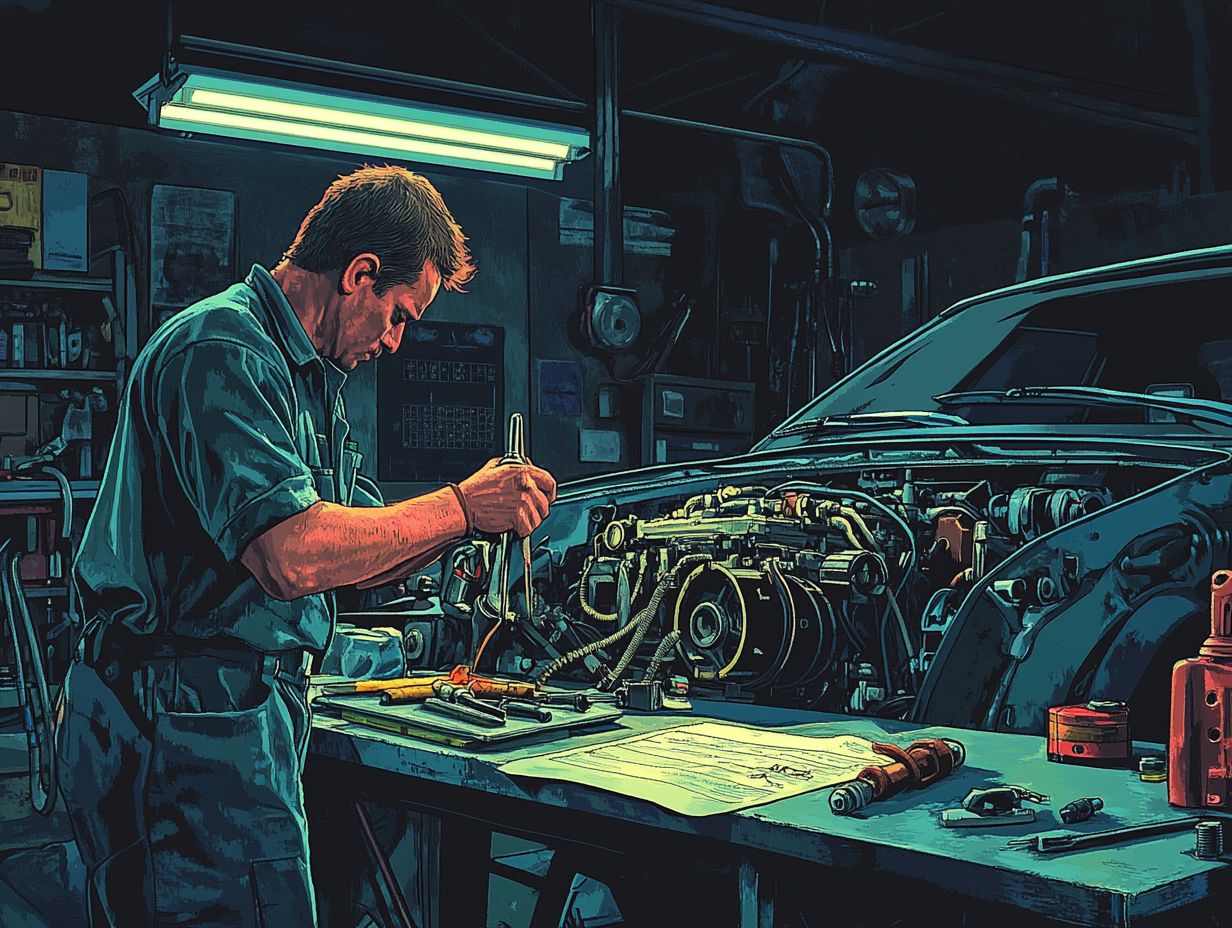
Regular inspections are essential for your vehicle’s safety and performance. A thorough inspection checks everything from the exterior to the interior and includes a test drive. Choose a trusted mechanic and follow a recommended schedule to catch issues early.
The Importance of Car Inspections
Regular car inspections ensure the safety and reliability of your vehicle.
They help discover visible and hidden damages that could affect performance and safety. Inspections not only fulfill legal obligations but also boost safety by spotting mechanical issues that could cause accidents. This proactive approach is crucial for your vehicle’s longevity and compliance with safety regulations.
Ultimately, inspections protect not just you as a driver but also pedestrians and other road users.
Why Regular Inspections are Necessary
Regular inspections are key to your vehicle’s safety and compliance with standards.
They help you detect risks and mechanical issues before they become serious. Consistent maintenance boosts performance and dramatically reduces the chance of accidents caused by mechanical failures.
Routine checks can reveal wear and tear that goes unnoticed, ensuring everything functions optimally.
Key Components of a Comprehensive Car Inspection
A complete car inspection assesses both the mechanical integrity and overall condition of your vehicle, including the most overlooked items that can impact performance.
The checklist includes looking for external damages like scratches and internal issues such as upholstery wear.
It also uncovers hidden damages that could affect performance. Advanced diagnostic tools help identify potential problems, ensuring no detail is overlooked.
Exterior and Interior Checks
Exterior and interior checks focus on identifying damage like scratches and rust while assessing internal components for wear.
These evaluations are critical for your vehicle s safety and reliability. A thorough visual assessment can find hidden problems like leaks or fraying belts that could become major issues if ignored.
By checking tires and brakes, you enhance performance and safety. Prioritizing these checks not only prolongs your vehicle’s life but also saves you from costly repairs, giving you peace of mind on every journey.
Under the Hood Inspection
Under-the-hood inspections are essential for gauging how well your car is working. They focus on engine evaluations that can uncover operational deficiencies and potential issues.
These thorough checks cover several critical components, including a careful assessment of fluid levels engine oil, coolant, and transmission fluid. This ensures everything is within the optimal range for peak performance.
A detailed inspection of the belts is vital. Worn or frayed belts can lead to significant mechanical failures if ignored.
Advanced diagnostic tools are invaluable in this process, allowing technicians to accurately identify underlying problems. By leveraging technology, they can access crucial data from your vehicle’s systems, powering them to make informed decisions about necessary repairs and maintenance all aimed at keeping your vehicle running seamlessly.
Test Drive and Performance Assessment
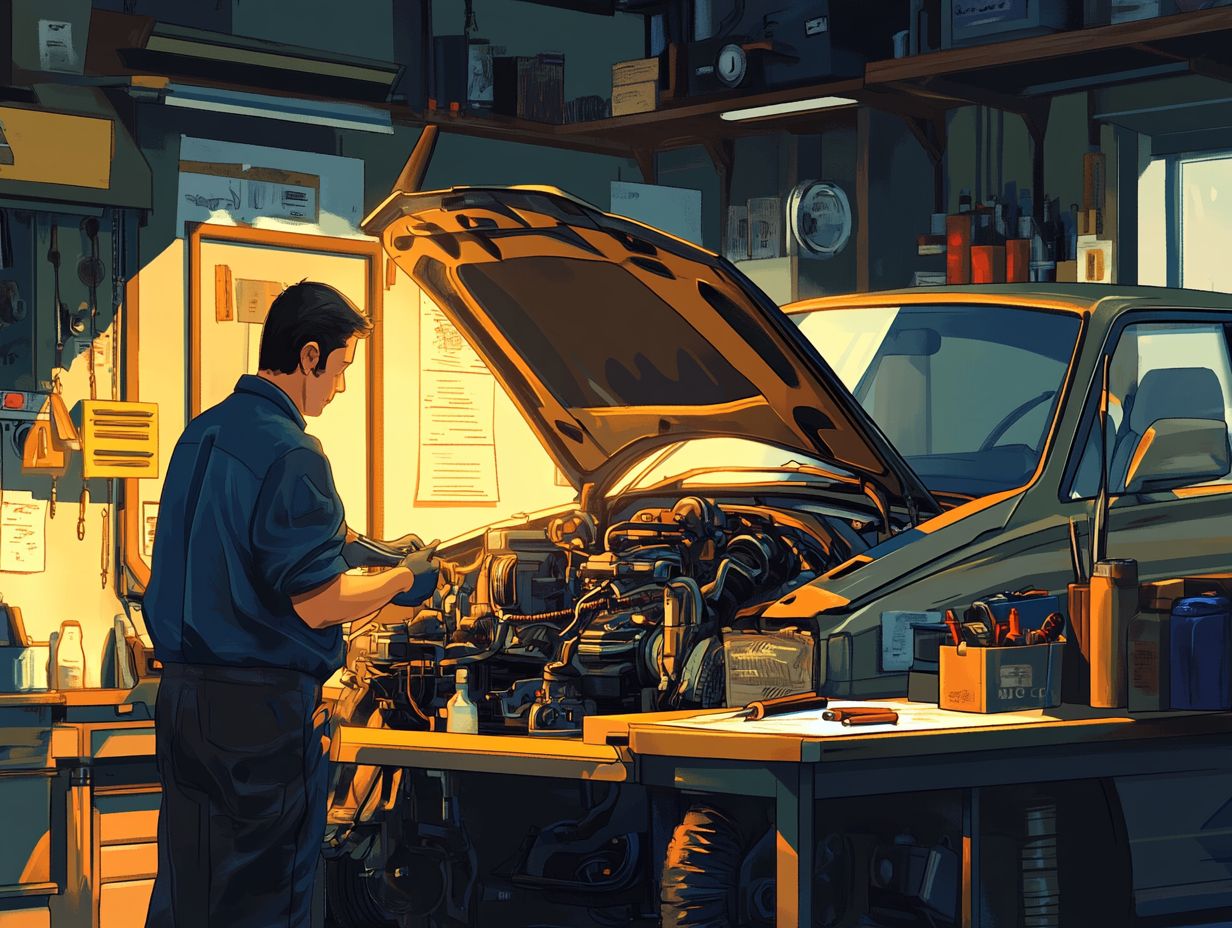
A test drive and performance assessment are critical components of a thorough car inspection. This enables mechanics to evaluate your vehicle’s handling, acceleration, and overall performance while meticulously checking vital elements like brakes and tire health. For a comprehensive evaluation, it’s important to know what to look for in a car inspection.
This step is crucial! It helps uncover any performance-related issues that could put you at risk on the road.
During the test drive, various aspects are carefully examined, including suspension quality, steering responsiveness, and engine performance under different conditions.
These evaluations not only identify existing problems but also foresee potential future failures. This ensures that any necessary repairs are addressed before they escalate into hazards.
By prioritizing this essential step, you can drive with greater confidence in your vehicle’s safety and longevity, ultimately leading to a smoother and more secure driving experience.
Signs of Potential Issues
Recognizing the signs of potential issues during a car inspection is essential for ensuring your vehicle’s safety and reliability. This proactive approach allows you to address any concerns early on.
By facilitating timely repairs or maintenance, you can save yourself from more significant problems down the road.
Identifying Red Flags During Inspection
Identifying red flags during a vehicle inspection is crucial for uncovering underlying mechanical issues that could jeopardize the safety of both drivers and passengers.
Look for visual cues, such as unusual tire wear or leaks beneath the engine these can signal impending trouble. Pay close attention to any irregularities in the vehicle s lights or brakes, as these may hint at more serious malfunctions that require immediate attention.
Employ a comprehensive inspection checklist that covers essential aspects like fluid levels, belt conditions, and suspension integrity. Utilizing essential tools for a car inspection will enable you to diligently evaluate these elements, proactively addressing potential problems and ensuring a safer and more reliable driving experience for everyone involved.
Choosing a Reliable Mechanic for Inspections
Choosing the right mechanic can make all the difference for your vehicle’s safety. When you find a reliable professional, you drive with confidence, knowing your vehicle is in expert hands.
Factors to Consider in Selecting a Mechanic
When you re choosing a mechanic for vehicle inspections, consider several factors, including their certification process, expertise in automotive technology, and reputation for handling insurance claims efficiently.
It’s essential to verify that the mechanic holds relevant certifications, like ASE (Automotive Service Excellence). This reflects a dedication to professional standards. Experience with specific vehicle models can also be a significant asset, as that familiarity often leads to quicker diagnostics and repairs.
Don t overlook customer testimonials and reviews; they offer valuable insight into the mechanic’s reliability and quality of service. A trustworthy mechanic should not only have a proven track record but also excel in open communication about issues and solutions, fostering a relationship built on trust with vehicle owners.
Frequency of Car Inspections
Regular car inspections are essential! They keep your vehicle running smoothly and safely.
By adhering to a well-planned maintenance schedule, you not only enhance the longevity of your car but also prioritize its safety on the road.
Recommended Schedule for Inspections
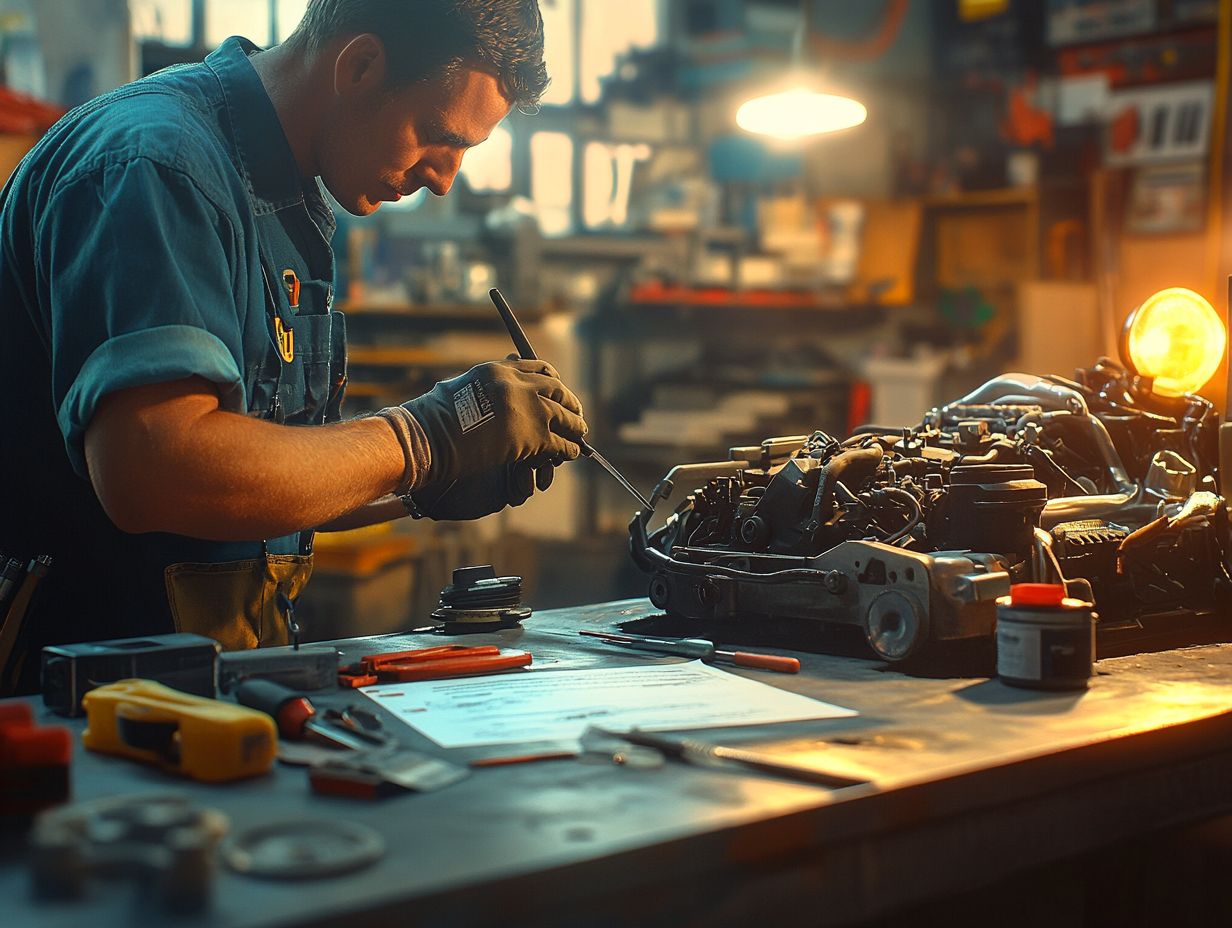
A recommended schedule for car inspections involves regular checks that align with safety standards and best practices for vehicle maintenance. This ensures your performance remains at its peak.
To implement this schedule effectively, consider factors such as the total mileage driven since the last service, seasonal changes that can impact your vehicle’s performance, and any previous car problems that might require more frequent checks.
Regular inspection intervals should take these elements into account to address potential issues proactively. For instance, increasing the frequency of inspections during harsh winter months or after a long road trip ensures that your vehicle remains roadworthy and safe.
Sticking to a smart inspection schedule keeps your car safe and reliable!
Costs of Car Inspections
Understanding car inspection costs is crucial for car owners.
Various factors can influence the final price, ultimately affecting how you budget for routine vehicle maintenance.
Factors Affecting Inspection Costs
Key factors influencing the cost of a car inspection include the type of vehicle you own, the extent of any necessary repairs, and whether special equipment is required to check how well your car is working.
Additionally, the make and model of your vehicle significantly impact the costs. Luxury vehicles or those equipped with specialized systems often require more thorough checks, driving up labor costs and needing skilled technicians familiar with specific brands.
The overall condition of your car is also crucial; for example, a well-maintained vehicle may incur lower inspection costs compared to one that needs significant repairs. To learn more about this, check out understanding the car inspection process and keep these factors in mind to avoid surprises!
Tips for Maintaining a Well-Inspected Car
Maintaining a well-inspected car requires you to follow these important tips and preventive measures that guarantee reliability and long-term performance for your vehicle.
Regular Maintenance and Care Guidelines
Regular maintenance and care guidelines are essential for ensuring the longevity and safety of your vehicle. They help you avoid issues that could arise between inspections.
This means implementing key practices like routine oil changes, which keep your engine operating smoothly and efficiently.
Don t overlook regular tire rotations, as they maintain even tire wear, enhancing both traction and performance on the road. Equally important are fluid checks, which contribute to the overall health of vital systems like your brakes and cooling mechanism.
By following these practices, you not only support the inspection process by minimizing potential problems but also significantly enhance your vehicle’s reliability and driving experience. Start these practices today and drive with peace of mind!
Frequently Asked Questions
What are the essential factors that should be included in a comprehensive car inspection?
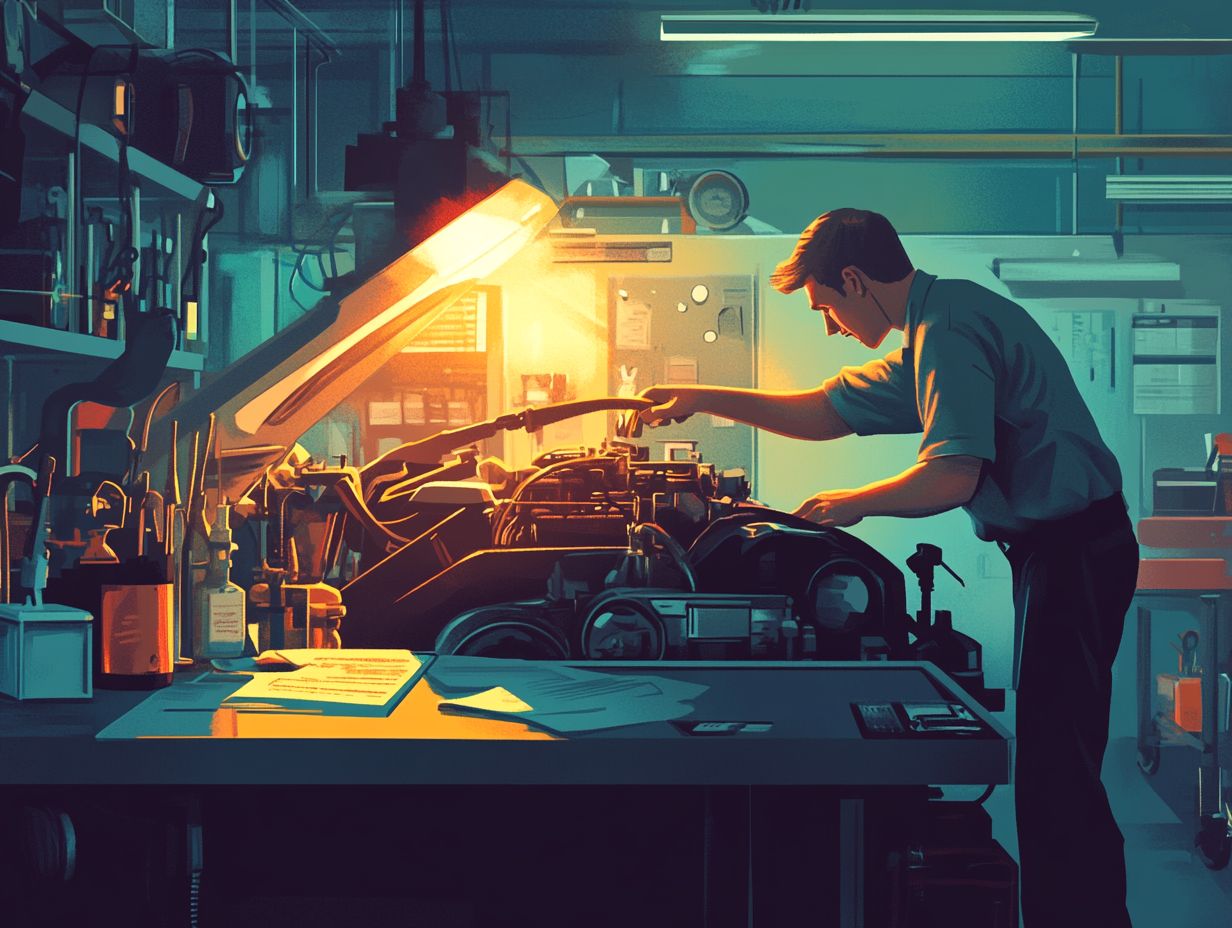
The essential factors in a comprehensive car inspection include checking the engine, tires, brakes, suspension, electrical system, and the body and interior of the vehicle, as detailed in what a comprehensive car inspection includes.
Why is it important to have a comprehensive car inspection?
A comprehensive car inspection helps identify potential issues with the vehicle and ensures that it is safe and reliable for use on the road. Before getting started, consider these essential questions to ask before car inspection, as they can also save you money in the long run by preventing major repairs.
How often should I get a comprehensive car inspection?
It is recommended to get a comprehensive car inspection at least once a year or before embarking on a long road trip. However, if you notice any changes in your vehicle’s performance, it is best to get it inspected immediately.
What are the benefits of a comprehensive car inspection?
A comprehensive car inspection gives you peace of mind, ensuring that you know your vehicle is safe and in good condition. To maximize this process, you can learn how to make the most of your car inspection.
The inspection helps find problems early, saving you time and money in the long run.
What happens during a comprehensive car inspection?
While different auto mechanics may have their own processes, a comprehensive inspection usually includes a complete check of your car’s parts, and knowing how to conduct a thorough car inspection can be invaluable.
This often involves visual checks, test drives, and using special tools to find any issues.
Can I perform a comprehensive car inspection on my own?
You can do a basic check yourself, but it s smart to have a professional take a look.
They have the skills to spot problems you might miss and provide a complete evaluation of your vehicle’s condition.

